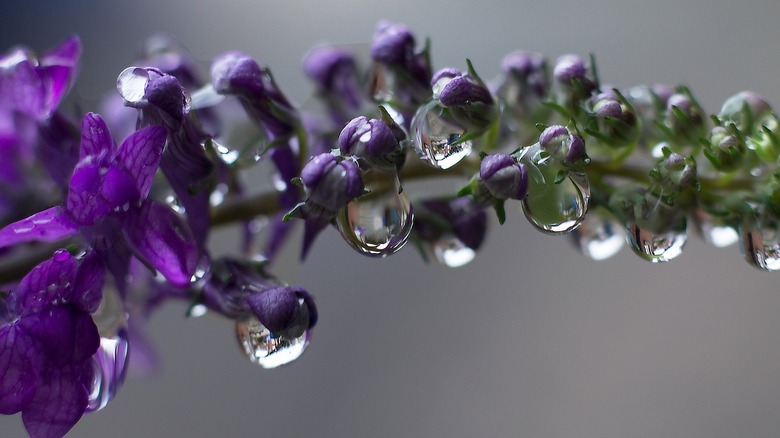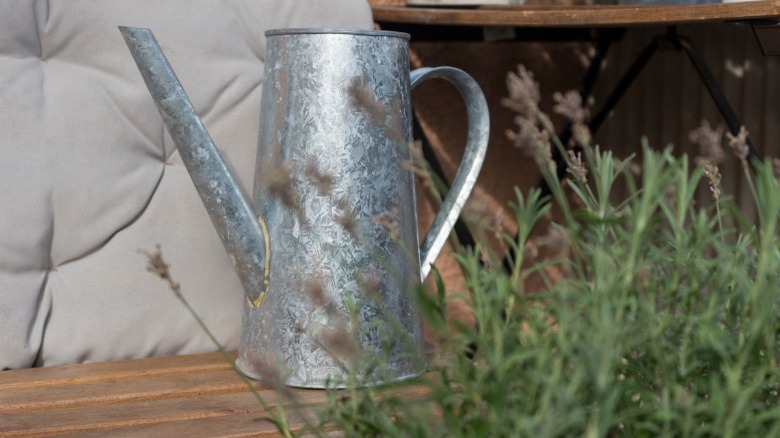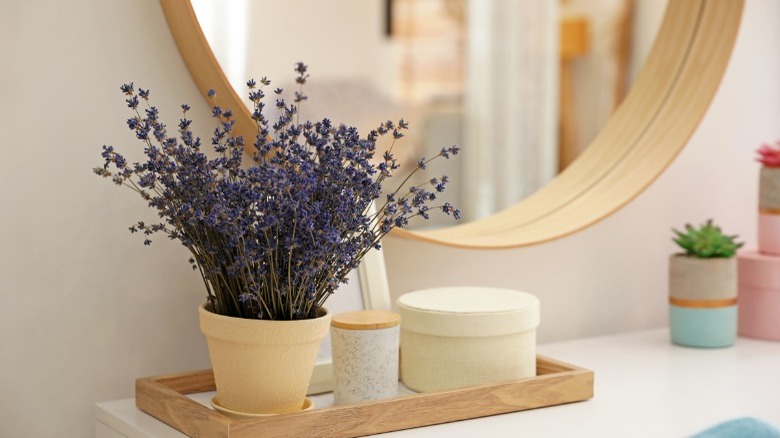The Best Method For Watering Lavender
The smell of fresh lavender on a warm, summer breeze can instantly transport you to a magical, flowery meadow. Add a cup of hazelnut coffee and some shade, and you're just this side of heaven. If you love your lavender as much as we do, you might be interested in the best method for watering it. Turns out there are actually a few different ways to do this, so we're going to give you the top two: over-the-soil watering and bottom watering. Either of these is appropriate for lavender plants, and we're going to explain exactly how to perform the task.
Until your lavender plants have been established, you'll need to water them one to two times every week. After they're growing well, you can scale that back until buds start to pop up to just once every two to three weeks. Once you begin to see the buds form, go back to once or twice a week until it's time to harvest your lavender. If you see that the leaves are starting to yellow, scale back the watering schedule.
The best way to tell if your lavender needs to be watered is by feeling the soil. You actually want it to dry out before you water it again, so if it's still moist, check back in a couple of days. Then choose one of the following methods.
Over-the-soil watering
The first method is over-the-soil watering, the kind of watering that most people are familiar with. With lavender, you want to avoid wetting the plant from overhead, and instead focus on the roots. Lavender is susceptible to bacterial leaf spot disease, and wetting the plant can encourage this. When you water, pour it into the soil around the circumference of the roots. Making sure you have potted plants in containers with ample drainage is crucial to prevent over-watering and stem and root rot.
Give the plant water until you see it start to drain from the bottom, and make sure you remove any excess water from the plant saucer when finished. When you choose over-the-soil watering, you want to avoid allowing the plant to sit in the drainage water afterward. You should also put a light layer of organic mulch around the root zone to assist in preserving the moisture in the soil. Avoid putting it directly next to the stems and crown area.
Watering from the bottom
The other most effective method for watering lavender is bottom watering. This is a great way to water if you have a tendency to over or under water your plants because it leaves the guesswork behind. The plant takes in exactly the amount of water it needs. So for this method, simply fill the drainage tray with water instead, and leave it for about 10 minutes or so. Then check the soil to see if it has absorbed and retained the moisture throughout.
If the soil feels moist from top to bottom then remove any excess from the tray before replacing it. If you still feel dryness in the soil, add more water to the tray and this time give it about 20 minutes. After that, remove any water that remains in the tray and replace it. This is a good way to ensure your lavender gets the right amount of water.
However, keep in mind that using this method doesn't enable the soil to rinse the salts and minerals away. To avoid this buildup, use the over-the-soil method once in a while with distilled water. Whichever way you choose, here's to growing happy, healthy, and fragrant lavender in your beautiful enchanted garden.


